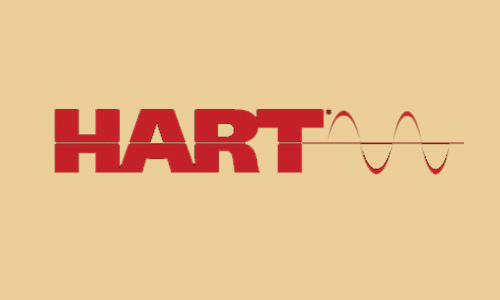Output Signal for Pressure Sensors
Output signal is one of the most important criteria that needs to be taken into account when choosing a pressure sensor, transduce or transmitter. There are many types of output signals to suit the preference of a particular industry standard and various application requirements, especially with regard to power consumption, susceptibility to noise, cost, constraints, and etc. In this article, we take a look at the most important and common output signal types and pay more attention to which kind of output is good for your application.
Millivolt-output (mV)
Millivolt output pressure transducers are typically one of the common types of pressure transducers.
They are the most economical pressure transducers and are called low-level transducers because they do not need to be amplified with transistors and filters that can influence the natural performance of the transducer sensing element, and only contain passive electronics necessary to develop and compensate for the low electrical output of the Wheatstone bridge.
The signal (voltage) produced by The transducer produces signal voltage, Where the output is directly proportional to excitation, the signal is expressed in terms of millivolts / volt (mV/V) of excitation.
Millivolt output pressure transducers have the highest response time and the lowest power consumption compared to other types like strain gauges and typically have a 20 mV or 50 mV with low voltage output signals proportional to the input supply voltage.
For example, a 5VDC supply with a 10mV/V output signal generates a 0-50mV output.
Voltage-output (VDC)
Voltage-output pressure transducers have Built-in signal conditioning and amplification to increase the output voltage of the bridge to a larger value such as 5 volts or 10 volts.
They are less sensitive to noise due to their larger voltage output and can be used in harsh electrical environments.
Voltage output signals can offer a high-frequency response, high-level voltage or frequency output signal and low current consumption for remote battery operated equipment.
Ratiometric output signal
In devices with ratiometric output, the output is directly proportional to a change in input or the supply voltage and no internal reference voltage is produced.
Since the components that generate the internal reference voltage are omitted, the power requirements for the electronics are reduced.
It became widely popular and utilized in industrial applications such as compressors and water pumps, and automotive and off-road applications.
For example, a sensor with 3 mV/V ratiometric output sensitivity, means that the full span output will increase by 3 millivolts for every 1-volt increase in supply voltage.
To view pressure sensors in our stock, please check out the pressure sensor.
4-20mA Current Loop Output
It is an ideal method of electrical signal transmitting process information because the current does not change as it transfers from transmitter to receiver.
It offers a robust measurement signal that can be transmitted through several devices as part of a series circuit without significant loss of signal.
4-20mA current loop output is a dominant type in many industries such as manufacturing, aerospace, and automotive applications.
Other Terms Related to Output Signals
2 wire output
This type of output for measuring element or transmitter receives the power and transmits the data signal through the same 2 connecting wires providing both the power supply and standard signal. (e.g. 4 - 20 mA 2-wire)
3 wire output
It is a type of electrical connection for a measuring element or transmitter which has three connecting wires for both the power supply and signal output, transmitting the data signal and the power with regard to the common ground. (e.g. 0 - 20 mA 3-wire)
HART
HART communication stands for “ Highway Addressable Remote Transducer” is a communication protocol for transmitting multiple signals by superimposing long-standard 4-20 mA DC analog signals on digital signals to enable various types of data communications and operates simultaneously without interfering with the measurement output signal.

By HART We can access data in the transducer remotely. So if there is a sensor in an inaccessible or hazardous area, configuration or maintenance of the sensor can be done from a safe, remote location.
Modbus
Modbus is a serial communication protocol for use with programmable logic controllers (PLCs) and is commonly used in process and factory automation.
This method of transmitting information over serial lines or via the Ethernet between electronic devices connected on different types of networks to communicate data to each other.
RS-485 / Modbus RTU
RS485 or EIA/TIA-485 standard provides a serial data transmission standard that determines electrical characteristics for multi-point, balanced differential data communications devices.
The Modbus protocol is commonly used when there is RS485 communication.
The voltage in this type of output is measured in a differential way between two wires.
i²C interface
I²C or Inter-integrated-circuit refers to a type of output in a serial communication protocol with a bidirectional two-wire synchronous serial bus normally made of two wires, SDA and SCL, and pull-up resistors.
So data is transferred bit by bit along a single wire. This interface is widely used for sensor data transfer.
IO-Link interface
IO-Link provides a serial, bi-directional (works two ways and in a short distance), point-to-point (between two separate endpoints) communication protocol for signal transmission, and energy supply under any networks, fieldbuses, or backplane buses.
It is used for communicating with sensors and/or actuators in factory automation processes and improves digital or analog sensor interfaces.
IO-Link / SIO
As explained above, IO-Link is a standard interface for sensors and actuators with two modes, standard input/output mode (SIO mode) and IO-Link communication mode.
In the SIO mode for standard input/output, the sensor operates as a normally switching sensor and transmits its detection state as a 0 V and 24 V signal. In this mode, the sensor can be used as a standard sensor without IO-Link.
PROFIBUS PA
PROFIBUS PA (Process Automation) as a part of the Profibus family of protocols is a variant of PROFIBUS DP that uses the IEC 61158-2 physical layer designed primarily for safe process applications.
In this type, devices are integrated on both networks seamlessly and transparently and data and power supply are transferred over the same two wires and there is an explosion-proof option.
Fieldbus
Fieldbus is a real-time digital communication network for process control applications that uses shared wiring for powering devices and transmitting signals between devices.
This all-digital, serial, two-way communications system interconnects measurement and control instruments like sensors, actuators, and controllers.
CANopen protocol
CAN or Controller Area Network is a high-level communication protocol and profile specifications based on CAN protocol.
CANopen was developed as an embedded network for applications, such as in-vehicle networks.
It provides a protocol that standardizes communication between devices and applications from different producers. It has been used in a wide range of industries, such as medical equipment, motion-oriented machine control systems, off-road vehicles, maritime electronics, railway applications, and building automation.
Charge (PE)
The output signal is an important factor for piezoelectric pressure sensors and converts the generated charge into a proportional voltage.
If the electronics is an external charge amplifier, it is referred to as a charge output or PE sensor.
Voltage (IEPE)
IEPE or Integrated Electronics Piezo-Electric, with a built-in charge amplifier or voltage amplifier, gives an output in voltage.
It converts the high impedance charge output of the piezo-ceramics into a low impedance voltage signal which can be transferred over long distances.
Force, pressure, acceleration sensors, and measurement microphones are some applications of IEPE.
Namur
This is a type of sensor output that provides an on or off indication and can be normally open or normally closed.
A Namur output sensor is suitable for installations where special safety measures in hazardous locations are necessary.
Wireless
Wireless signals defined as electromagnetic waves traveling through the air are important and very useful because they can transfer information without the use of wires.
There are numerous type of other outputs and terms regarding outputs but here we tried to cover the most important and common ones here.
You can also read the following article to get more familiar with pressure sensor:
An Eye-Opening Guide To Pressure sensor Types: Everything You Need To Know
Introducing Any Pressure Sensor Use You Might Need
Ingress Protection Vs. NEMA Enclosure Ratings
Melt Pressure Transmitter and High-Temperature Transmitter
All Temperature Types Regarding Pressure Transmitter
Recent Posts
-
Booster Pump Troubleshooting and Maintenance: How to Fix and Prevent Common Issues
1. Introduction Imagine turning on your faucet only to be greeted with a weak trickle of water when …22nd Apr 2025 -
Energy-Efficient Booster Pumps: Selection and Tips for Maximizing Performance
1. Introduction Imagine never having to deal with fluctuating water pressure, noisy pumps, or skyroc …19th Apr 2025 -
Booster Pumps for Sustainable Water Systems: Irrigation and Rainwater Harvesting Solutions
1. Introduction Water scarcity is no longer a distant threat—it’s a reality affecting millions …16th Apr 2025





